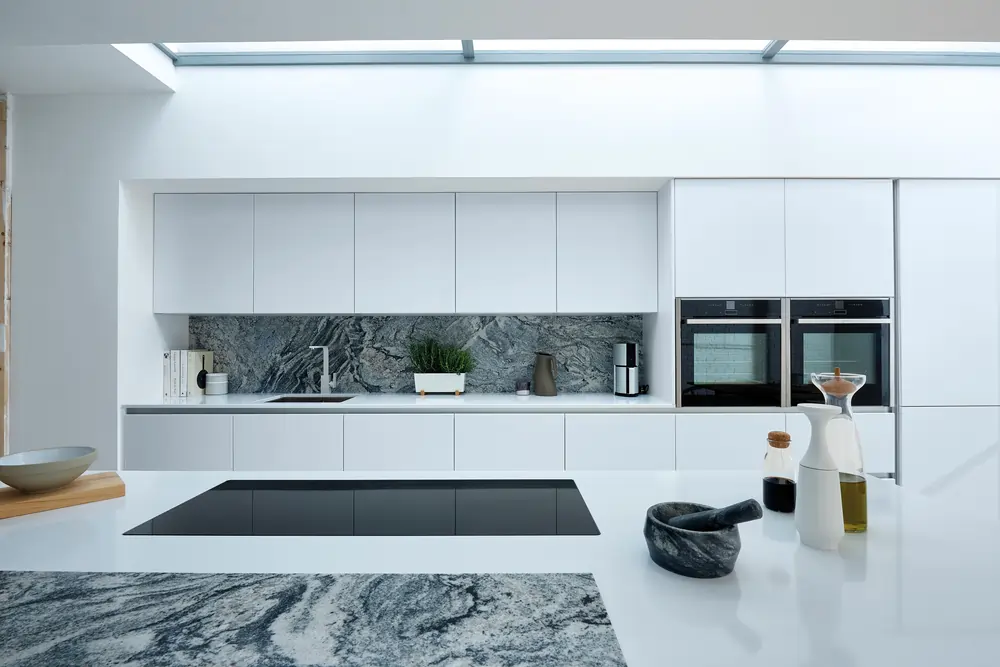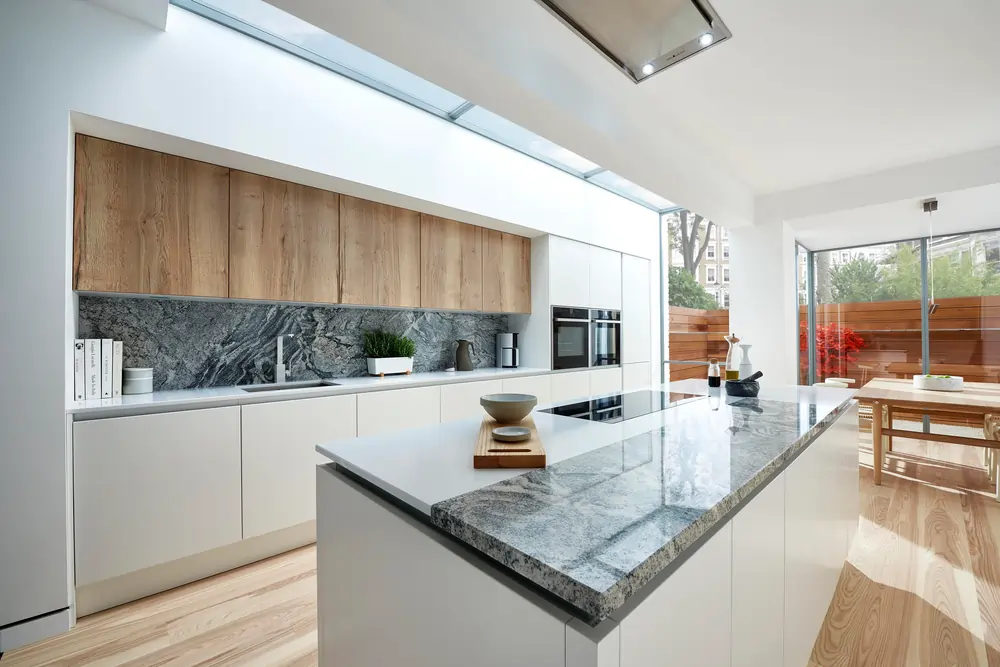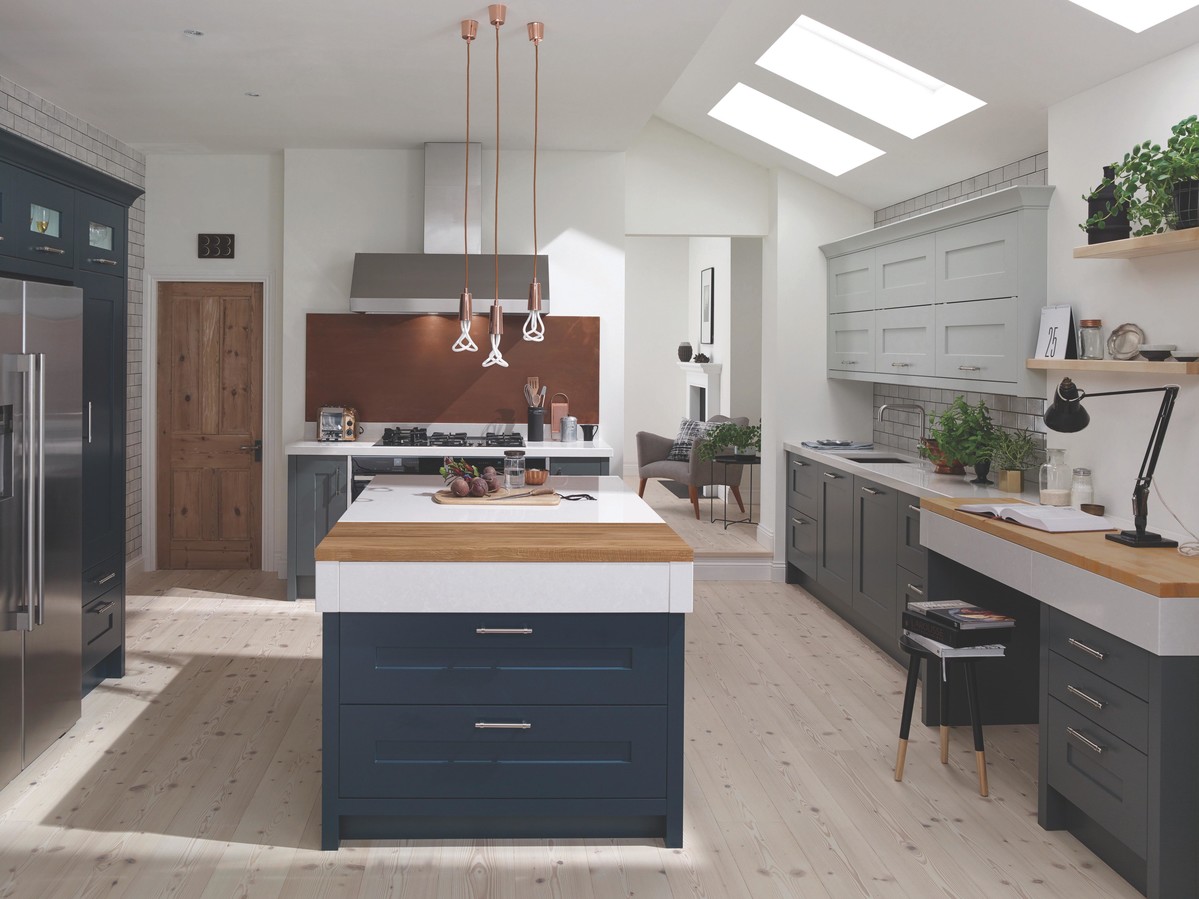
There are many elements to consider when choosing a hardworking kitchen worktop. The first is budget, and this will influence greatly the type of material you choose. The second is practicality, how low maintenance do you want it to be, and the third is the look, what colour and texture you want, along with any design details such as sweeping curves, moulded sinks or the latest thin edged profile.
The primary factor to consider when looking at the best kitchen worktops is material. The most common options are granite, wood, quartz, solid surface and laminate. Each come with their own unique properties. We’ll consider briefly the benefits of each and if there are any significant downsides.
Granite is increasingly the material of choice for kitchen worktops and for some nothing can beat the beauty of natural stone with its veigning and colouring unique to each slab. It’s a luxury material that never falls out of fashion and suits both traditional and modern styles. Choose from a classic polished finish, or a honed matt for a more contemporary look.
Pros and cons. Granite is very hard-wearing, extremely heat-resistant, has anti-bacterial properties and is easy to clean. Also bear in mind that stone lasts, and if you look after and maintain it, it should last a lifetime. There are few downsides except the cost and it’s also very heavy and therefore difficult to manoeuvre.

Made from about 90% natural quartz crystals mixed with a small percentage of binders, and referred to as both ‘quartz composite’ and ‘engineered stone’, this material is very tough, virtually non-porous and resistant to scratches, stains, heat damage and impact, and often comes with a long warranty.
Pros and cons. Quartz is very hard-wearing, has anti-bacterial properties, is resistant to staining and is available in an unrestricted range of colours. It has a consistent finish and any scratches can be repaired. Integrated sink options are also available.
Like granite, there are very few downsides except the cost and it isn’t as heat resistant as granite so you won’t be able to put hot pans directly onto the surface.

Made from a blend of acrylic resins, minerals and colourings, solid surfaces are warm to the touch with a natural lustre; they can be totally seamless too with one-piece, moulded sinks and splashbacks. They are heat and scratch resistant to a point, but can’t compete with solid stone or quartz. They’re non-porous, making them hygienic and dirt/bacteria resistant.
Pros and cons. They are pretty low maintenance in terms of cleaning, just use a soft cloth and mild detergent. They are also very hygienic as there are no joints for dirt and bacteria to hide in and offer limitless design opportunities with the options of integrated sinks. On the downside, although it’s difficult to damage them, they are difficult to repair.
For natural warmth and character, solid wood worktops are perfect for both classic and contemporary kitchens. Look to oak, maple and beech for a traditional style and bamboo, wenge and iroko for a more modern feel. Always choose a sustainable hardwood, preferably from an FSC (Forest Stewardship Council) accredited source.
Pros and cons. Wood is cheaper than stone options and every surface is unique. Scratches can also be sanded out and wood develops its own patina and character over time. On the downside a minimum amount of maintenance is required to keep your worktop looking beautiful. Oiling every 3 months with Danish oil is recommended and avoid prolonged soaking especially by the sink and tap. Wood worksurfaces can stain.

For those on a budget laminate is a cost effective and versatile worktop solution. They can look great by accurately imitating other worktop materials, including granite, slate and wood, so they will suit both modern and traditional schemes. They can be cut and fitted by a DIY enthusiast as opposed to the specialist installation required by the other materials.
Pros and cons. Laminate worktops are cheap compared to the alternatives, they can be made to look like more expensive alternatives, are easy to maintain and clean, hard-wearing and scratch and heat-resistant. On the downside they can peel after being subject to heat and steam over a prolonged period.